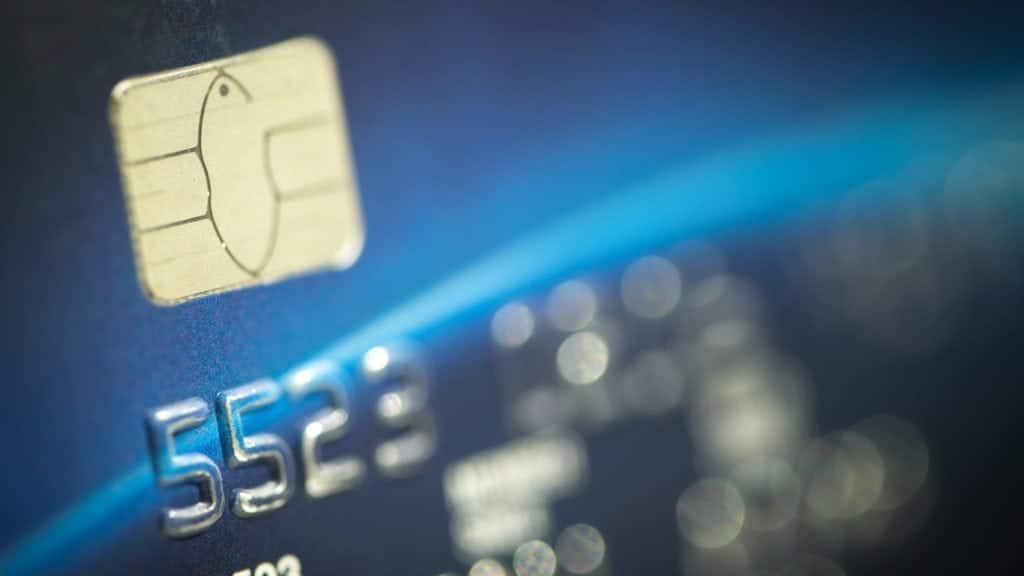What Is Plaid and Is It Safe to Use? Everything You Need to Know

TABLE OF CONTENTS
Plaid has rapidly become a common platform for seamlessly sharing your financial data with trusted apps and services.
Whether you’re using a budgeting app, investing platform, or peer-to-peer payment solution, chances are you’ve encountered Plaid. This powerful technology bridges the gap between your bank accounts and various digital financial tools.
As one in three American adults already utilize Plaid’s services, understanding what it is and addressing potential security concerns is crucial.
This comprehensive guide will explore Plaid in-depth, covering what it is, how it works, its safety measures, and more.
What Is Plaid?
Plaid is a financial technology company that specializes in securely exchanging financial data between banks and third-party applications. It acts as the middleman, facilitating the flow of information from your accounts to popular services like Venmo, Acorns, SoFi, and MoneyLion.
Rooted in the belief that individuals have a right to control their financial data, Plaid’s mission goes beyond just making data accessible. By implementing robust data controls, the company ensures user privacy while granting access to over 8,000 financial services.
Plaid’s user-friendly data control tools empower customers to choose what data is shared, who has access to it, and how it is managed. This transparent approach has fueled Plaid’s evolution within the financial ecosystem, making it a trusted partner for seamless money transfer solutions.
How Does Plaid Work?
Plaid acts as the bridge, linking your financial accounts with a wide range of apps and services. It offers access to various data points, including account holder details, transaction information, and account-specific data. This integration occurs seamlessly within eligible apps, eliminating the need for a standalone Plaid app or individual account.
The process is straightforward: you select your financial institution, provide your login credentials, and confirm the necessary security details to share the required data.
But how does Plaid ensure this exchange of sensitive information is secure?
The answer lies in its powerful API (Application Programming Interface) technology.
APIs facilitate collaboration between software programs, enabling efficient digital interactions. Plaid’s API connects apps directly to bank accounts, ensuring compatibility and secure data sharing.
Developers can request Plaid’s API keys to access real-time financial data without establishing individual connections. This streamlined approach enhances software compatibility, making digital financial experiences more efficient and user-friendly.
How Does Plaid Work With Venmo?
Venmo, the wildly popular mobile app for peer-to-peer payments and money transfers, relies heavily on Plaid’s services. When you use Venmo to send or receive funds, the app needs to verify your bank account information and ensure you have sufficient funds for transactions. This is where Plaid comes into play.
The process begins when Venmo prompts you to input your online banking username and password. Venmo then utilizes Plaid to securely confirm these account details and check your available balance. With Plaid acting as the intermediary, your sensitive login credentials never get shared directly with Venmo, enhancing the security of your financial information.
What Is Plaid Bank Verification?
Plaid bank verification is the process employed by financial apps like Venmo to authenticate bank account ownership and verify funds status. When you attempt to link a new bank account, the app will redirect you to Plaid’s secure platform. Here, you’ll enter your banking credentials, which Plaid uses to confirm the account belongs to you and check the current balance.
Once verified, Plaid shares the authorized data with the app, enabling a seamless financial information exchange without exposing your login details. This added layer of security ensures only you can grant access to your accounts, giving you full control over your data sharing.
Is Plaid Safe to Use?
Plaid remains committed to fostering trust and reliability among users while continuously innovating to bolster security measures. The platform prioritizes security and privacy through:
Data Protection
Plaid employs robust encryption, including AES and TLS, for data both in transit and at rest. This ensures that information exchanged between your app, Plaid, and financial institutions remains secure and inaccessible to unauthorized parties.
Authentication
The company implements industry-standard authentication and access controls to permit only authorized entities to access financial data.
Compliance
Plaid adheres to data protection regulations like GDPR and CCPA, as well as financial industry standards such as PCI DSS.
Regular Audits
The application conducts routine security audits and assessments to identify and rectify vulnerabilities.
User Consent
Plaid respects user consent, requiring explicit authorization to access and share financial data with third-party apps.
Monitoring and Alerts
Plaid maintains vigilant monitoring systems to swiftly detect and respond to unusual activity or security breaches.
Independent Testing
Plaid’s Bug Bounty Program and independent security testing demonstrate their commitment to safeguarding customer information.
Certifications and Policies
Plaid offers user control over data sharing, a clear privacy policy, and certifications in recognized security standards like ISO 27001 and ISO 27701. Their robust infrastructure and multi-factor authentication further enhance security.
Privacy and Data Handling
Plaid emphasizes transparency and responsible data handling when it comes to your personal financial information. Their clear privacy policy ensures that your data is never shared without your explicit consent, and it explicitly states that user data is not sold or rented to third parties.
Plaid utilizes customer data for various legitimate purposes, including providing their services, developing and improving their products, preventing fraud, protecting user privacy, offering customer support, conducting investigations, and complying with legal requirements. However, this use of data always occurs with prior user consent and notification. This responsible approach allows Plaid to enhance its services while making user privacy and security the top priority.
How Much Does Plaid Cost?
Plaid offers a range of flexible pricing options designed to cater to diverse business needs. Their pricing model starts with a free plan, perfect for developers looking to experiment and test Plaid’s core products. This free plan provides access to unlimited test credentials and up to 100 live items with real data integration.
For those ready to launch projects without contractual obligations, Plaid has a pay-as-you-go plan that eliminates monthly minimums while including unlimited live items. Larger enterprises or high-volume users can opt for custom plans starting at $500 per month. These custom plans come with additional features like account management, access to beta products, add-ons, integration assistance, and premium support.
It’s important to note that Plaid’s pricing varies depending on the specific products used, and charges are only activated upon requesting production access. Consumers using Plaid-powered apps can continue to enjoy the service for free. For precise pricing details, developers can contact Plaid’s sales team directly or visit their website.
Plaid Reviews and Public Perception: Is It Worth the Hype?
Plaid has received overwhelmingly positive reviews from users and customers alike, who praise its ease of use, versatility, and tangible benefits. Users appreciate how Plaid simplifies their financial lives, making it a valuable tool for managing various monetary needs. While there have been isolated reports of site outages, users generally don’t find many significant downsides to using Plaid’s services.
One of Plaid’s biggest strengths lies in solving critical problems related to identity verification and automation in contract processes. Many users find that integrating Plaid with their internal systems streamlines identity checks and contract workflows, automating much of the manual labor involved. Customers consistently report that Plaid delivers on its promises, making these tasks more efficient and hassle-free.
Additionally, Plaid earns kudos for its seamless integration capabilities with diverse banking data sources and companies. Its ability to quickly adapt and cater to the evolving needs of the fintech and banking industries makes it an invaluable tool for businesses. However, some users have noted difficulties when attempting to integrate with non-U.S. banks, which can pose a challenge for global operations.
Final Thoughts on Plaid
Plaid has established itself as a trusted bridge, seamlessly connecting bank accounts with a vast ecosystem of over 8,000 financial services and trusted apps. By acting as the secure intermediary, Plaid empowers users to maintain control over their sensitive data while enjoying the convenience of accessing a wide range of financial tools.
From budgeting and investing to peer-to-peer payments and beyond, Plaid’s powerful API and stringent security protocols ensure a safe and efficient exchange of financial information. As the company continues to prioritize data privacy, user consent, and innovative security measures, Plaid remains a reliable choice for individuals and businesses seeking seamless money management solutions in the digital age.
Combined with Payment Savvy all-in-one business payment solution, Plaid can prove an invaluable asset to your company’s payment processing, strengthening security and user experience. Get in touch with us today and see how our solutions can complement Plaid in more ways than one!
Frequently Asked Questions About Plaid
How do I use Plaid?
You’ll usually interact with Plaid when linking your financial accounts to various apps and services. This typically involves clicking options like “Add bank account” or “Connect account” within the app.
Plaid’s account connection process will then guide you through selecting your financial institution, providing authentication credentials like your banking username and password, completing any security verifications like multi-factor authentication, choosing specific accounts to connect, and finalizing the data sharing permissions.
Is Plaid legit and safe?
Yes, Plaid is considered a legitimate and safe platform for sharing financial data. They place a strong emphasis on data security and user privacy, implementing robust encryption protocols like AES 256 and TLS, multi-factor authentication, routine security audits, and compliance with major data protection regulations like GDPR and CCPA.
Plaid also has a clear privacy policy stating they will never share your data without consent or sell it to third parties. You maintain control over which companies can access your data and what information is shared.
What information does Plaid collect from my bank?
The specific information Plaid can access and share includes your name, contact details, transaction history with dates, amounts and descriptions, account names and types, account numbers, routing numbers, and real-time balances. However, the data shared is determined by the permissions you grant to each app or service using Plaid.
Why does Plaid need to connect to my bank account?
Plaid connects to your bank account to enable secure sharing of your financial data with the various apps and services you choose to use. This allows those apps to access the specific account information required to provide their services, such as budgeting insights, investment management, payment processing, and more, without having direct access to your login credentials.



